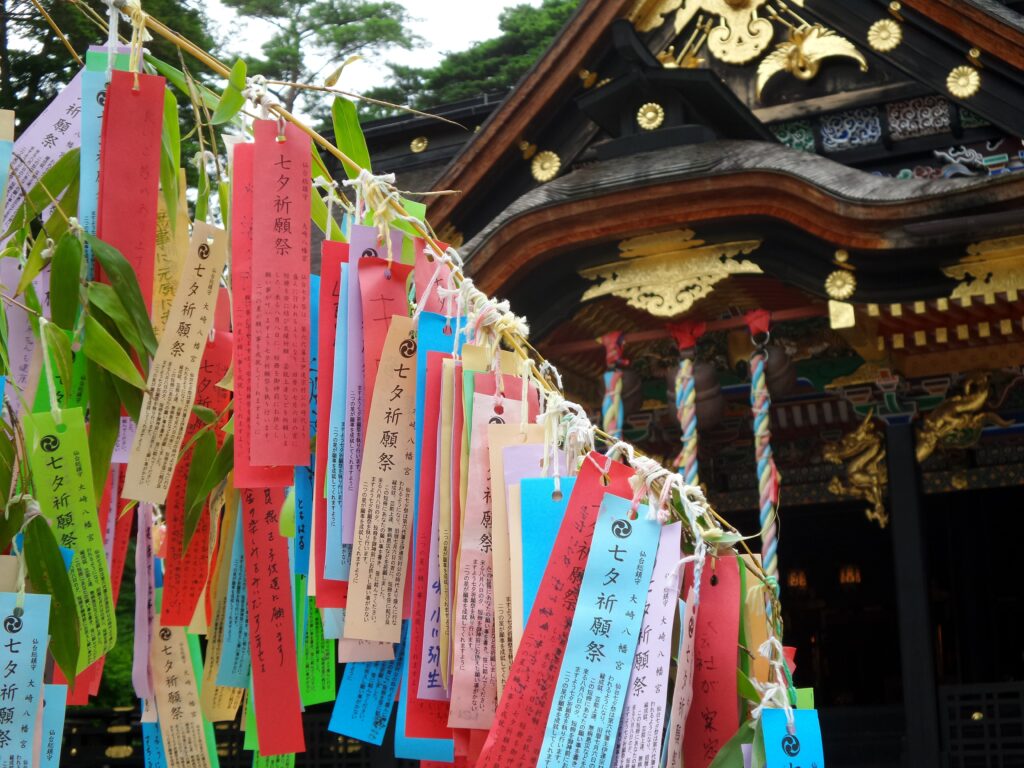
Introduction: Why Sendai Should Be on Your Japan Itinerary
When planning a trip to Japan, Tokyo, Kyoto, and Osaka often dominate travelers’ itineraries. However, just 90 minutes north of Tokyo by bullet train lies Sendai, a city that offers authentic Japanese experiences without the overwhelming crowds. Known as the “City of Trees,” Sendai combines urban sophistication with easy access to breathtaking natural landscapes, making it one of Japan’s best-kept secrets.
Founded in 1600 by the legendary one-eyed samurai lord Date Masamune, Sendai is the largest city in Japan’s Tohoku region, with a population of over one million people. Despite its size, Sendai maintains a relaxed atmosphere and walkable city center that makes it perfect for travelers seeking to experience a different side of Japan.
In this comprehensive guide, we’ll explore everything Sendai has to offer, from its rich samurai history and cultural festivals to its renowned culinary specialties and natural wonders. Whether you’re planning a day trip from Tokyo or using Sendai as a base to explore the wider Tohoku region, this guide will help you discover why Sendai deserves a spot on your Japan travel itinerary.
Table of Contents
- Getting to Sendai
- Best Time to Visit
- Top Attractions and Things to Do
- Food and Culinary Experiences
- Festivals and Events Calendar
- Day Trips from Sendai
- Where to Stay
- Practical Travel Tips
- Suggested Itineraries
- Frequently Asked Questions
<a id=”getting-to-sendai”></a>
Getting to Sendai: Transportation Options
From Tokyo
The easiest and fastest way to reach Sendai from Tokyo is via the JR Tohoku Shinkansen (bullet train). The journey takes approximately 90-120 minutes depending on which train you take:
- Hayabusa: Fastest option, about 90 minutes
- Hayate: About 100 minutes
- Yamabiko: About 120 minutes
A one-way ticket costs approximately 11,200 yen, but the journey is covered by the Japan Rail Pass, making it an economical option for international visitors.
From Other Major Cities
- From Kyoto/Osaka: Take the Tokaido/Sanyo Shinkansen to Tokyo, then transfer to the Tohoku Shinkansen. The entire journey takes about 4-5 hours.
- From Sapporo: Direct flights to Sendai Airport take about 55 minutes, or you can take the JR Hokkaido Shinkansen to Shin-Aomori and transfer to the Tohoku Shinkansen.
From Sendai Airport
Sendai has its own international airport with connections to major Asian cities. From Sendai Airport to the city center:
- Airport Access Line: The railway connects the airport directly to Sendai Station in about 25 minutes for 650 yen.
- Airport Limousine Bus: Runs to Sendai Station bus terminal in about 40 minutes for 680 yen.
- Taxi: Approximately 30 minutes and costs around 5,000 yen.
<a id=”best-time-to-visit”></a>
Best Time to Visit Sendai: Seasonal Guide
Sendai experiences four distinct seasons, each offering unique experiences:
Spring (March to May)
Spring brings mild temperatures and cherry blossoms, making it an excellent time to visit. Key highlights include:
- Cherry blossom viewing at Tsutsujigaoka Park and along the Shiroishi River (late March to early April)
- Aoba Castle Park with its combination of historical ruins and spring flowers
- Comfortable temperatures ranging from 5°C to 20°C (41°F to 68°F)
Summer (June to August)
Summer is hot and humid but brings Sendai’s most famous festival:
- Sendai Tanabata Festival (August 6-8), one of Japan’s most spectacular festivals
- Jozenji Street Jazz Festival (second weekend of September)
- Temperatures ranging from 20°C to 30°C (68°F to 86°F) with high humidity
Autumn (September to November)
Autumn offers comfortable temperatures and stunning foliage:
- Naruko Gorge with its spectacular autumn colors (mid-October to early November)
- Akiu Great Falls surrounded by vibrant autumn foliage
- Pleasant temperatures from 10°C to 23°C (50°F to 73°F)
- Less rainfall than other seasons
Winter (December to February)
Winter brings snow and illuminations to Sendai:
- Sendai Pageant of Starlight (December), when zelkova trees along Jozenji-dori Avenue are decorated with thousands of lights
- Nearby hot springs such as Akiu and Sakunami are particularly enjoyable in winter
- Cold temperatures from -2°C to 5°C (28°F to 41°F)
- Occasional snowfall, especially in January and February
Best Overall Time to Visit: Late May to early June or September to October offer the most comfortable weather and fewer crowds. However, if you want to experience Sendai’s famous Tanabata Festival, plan your visit for early August.
<a id=”top-attractions”></a>
Top Attractions and Things to Do in Sendai
Historical and Cultural Sites
1. Sendai Castle Site (Aoba Castle)
The former castle of Date Masamune now offers panoramic views of the city and houses a statue of the famous one-eyed lord.
- Location: Kawauchi, Aoba Ward
- Access: 20-minute walk from Sendai Station or take the Loople Sendai Bus
- Hours: Open 24 hours (castle museum 9:00-16:00)
- Admission: Free (castle grounds), 700 yen (museum)
2. Zuihoden Mausoleum
The ornate mausoleum of Date Masamune, featuring beautiful architecture and surrounded by cedar trees.
- Location: Otamayashita, Aoba Ward
- Access: 15-minute bus ride from Sendai Station
- Hours: 9:00-16:30 (March-November), 9:00-16:00 (December-February)
- Admission: 550 yen
3. Osaki Hachimangu Shrine
A striking black lacquered shrine designated as a National Treasure, built in 1607 by Date Masamune.
- Location: Hachiman, Aoba Ward
- Access: 15-minute walk from JR Kunimi Station
- Hours: 9:00-17:00
- Admission: Free (300 yen for treasure hall)
4. Sendai City Museum
Learn about the history of Sendai and view artifacts related to Date Masamune and the Date clan.
- Location: Kawauchi, Aoba Ward
- Access: 15-minute walk from Kokusai Center subway station
- Hours: 9:00-16:45 (closed Mondays)
- Admission: 460 yen
Nature and Outdoor Activities
5. Matsushima Bay
One of Japan’s Three Most Scenic Views, featuring pine-covered islands dotting the bay.
- Location: Matsushima town (30 minutes from Sendai)
- Access: Take the JR Senseki Line to Matsushima-Kaigan Station
- Recommended: Bay cruise (1,500 yen, 50 minutes)
6. Rinnoji Temple and Osaki Park
A beautiful temple with Japanese gardens that change with the seasons.
- Location: Kitayama, Aoba Ward
- Access: 10-minute walk from Kita-Sendai Station
- Hours: 9:00-16:00
- Admission: 300 yen
7. Akiu Great Falls
One of Japan’s Three Great Waterfalls, located in a peaceful forest setting.
- Location: Akiu area, about 30 minutes from central Sendai
- Access: Bus from Sendai Station to Akiu Otaki
- Hours: Always open
- Admission: Free
Modern Attractions
8. Sendai Mediatheque
An award-winning architectural marvel housing a library, art galleries, and event spaces.
- Location: Kasuga, Aoba Ward
- Access: 10-minute walk from Kotodai-koen subway station
- Hours: 9:00-22:00 (closed 4th Thursday of each month)
- Admission: Free (some exhibitions may charge)
9. Sendai Umino-Mori Aquarium
A modern aquarium showcasing marine life from the Tohoku region and beyond.
- Location: Nakano, Miyagino Ward
- Access: 10-minute walk from JR Nakanosakae Station
- Hours: 9:00-18:00
- Admission: 2,200 yen
10. Yagiyama Zoological Park
A family-friendly zoo featuring over 130 species of animals.
- Location: Yagiyama, Taihaku Ward
- Access: 5-minute walk from Yagiyama Zoological Park subway station
- Hours: 9:00-16:30 (closed Mondays)
- Admission: 480 yen
<a id=”food-experiences”></a>
Food and Culinary Experiences in Sendai
Sendai is known for several culinary specialties that visitors should try:
Must-Try Local Dishes
1. Gyutan (Beef Tongue)
Sendai’s most famous specialty, thinly sliced grilled beef tongue, typically served with barley rice, oxtail soup, and pickles.
Recommended restaurants:
- Aji Tasuke: The original gyutan restaurant founded in 1948
- Umami Tasuke: Modern take on the classic dish
- Kaku: High-end gyutan experience
2. Zunda Mochi
Sweet mochi (rice cakes) topped with a paste made from edamame (green soybeans).
Where to try:
- Mitsukoshi Department Store basement food floor
- Zunda Saryo in S-PAL shopping center
3. Sasakamaboko
Fish cake shaped like a bamboo leaf, often grilled and served as a snack or appetizer.
Recommended shops:
- Sanmata Sohonten: Offers free samples and factory tours
- Oizen at Sendai Station
4. Hiyashi Chuka
Cold ramen noodles with various toppings, perfect for hot summer days.
Recommended restaurants:
- Shijiki in Ichibancho
- Ippudo Sendai (seasonal menu)
Food Markets and Dining Areas
1. Sendai Station Food Floors
Both the S-PAL shopping center and the station building have excellent food courts and specialty shops.
2. Clis Road Shopping Arcade
Covered shopping street with numerous restaurants and food stalls.
3. Iroha Yokocho
Atmospheric alley lined with small traditional eateries and izakaya (Japanese pubs).
Food Tours and Cooking Classes
- Sendai Gourmet Walking Tour: 3-hour guided tour of local specialties (book in advance)
- Date Cooking Studio: Offers classes on preparing local dishes including gyutan and zunda mochi
Drinking Culture
- Izakaya hopping in the Kokubuncho district, Sendai’s entertainment area
- Local sake tasting at Urakasumi Sake Brewery or Nikka Whisky Sendai Factory
<a id=”festivals-events”></a>
Festivals and Events Calendar
Major Annual Festivals
1. Sendai Tanabata Festival (August 6-8)
Japan’s most famous Tanabata celebration featuring massive, colorful paper decorations hanging throughout the city center. Over 2 million visitors attend this spectacular event each year.
Highlights:
- Elaborate paper decorations along Chuo-dori Avenue
- Traditional dance performances
- Food stalls and night market
- Fireworks display on August 5
2. Sendai Pageant of Starlight (December)
The zelkova trees along Jozenji-dori Avenue are illuminated with over 600,000 LED lights, creating a magical winter wonderland.
Highlights:
- Illumination from early December to late December
- Weekend street performances
- Christmas market
3. Aoba Matsuri (May)
A festival celebrating the founding of Sendai by Date Masamune.
Highlights:
- Samurai parade through the city center
- Traditional performances at Kotodai Park
- Food stalls and craft market
4. Jozenji Street Jazz Festival (September)
One of Japan’s largest jazz festivals, with over 700 bands performing on stages throughout the city.
Highlights:
- Free performances on multiple stages
- International and domestic jazz artists
- Street food and craft beer gardens
Monthly Events Calendar
- January: New Year’s Hatsumode (first shrine visit) at Osaki Hachimangu
- February: Strawberry picking season begins; Akiu Ice Festival
- March/April: Cherry blossom viewing at Tsutsujigaoka Park
- May: Aoba Matsuri; Spring Fujisaki Art Festival
- June: Hydrangea viewing at Atagoyama Park
- July: Sendai Oroshiuri Market Summer Festival
- August: Sendai Tanabata Festival
- September: Jozenji Street Jazz Festival
- October: Michinoku YOSAKOI Festival; autumn foliage begins
- November: Peak autumn colors at Naruko Gorge and surrounding areas
- December: Sendai Pageant of Starlight; SENDAI Hikari no Pageant
<a id=”day-trips”></a>
Day Trips from Sendai
Sendai serves as an excellent base for exploring the wider Tohoku region. Here are some recommended day trips:
1. Matsushima
One of Japan’s Three Most Scenic Views, just 30 minutes from Sendai.
What to do:
- Bay cruise to see the pine-covered islands
- Visit Zuiganji Temple, an important Zen temple
- Explore Godaido Temple on a small island connected by a bridge
- Enjoy fresh seafood, especially oysters
Getting there: Take the JR Senseki Line from Sendai Station to Matsushima-Kaigan Station (25-35 minutes)
2. Naruko Gorge
Famous for its spectacular autumn colors and hot springs.
What to do:
- Hike the Naruko Gorge trail for stunning views
- Visit the Kokeshi Museum to learn about traditional wooden dolls
- Relax in one of many hot spring baths
Getting there: Take the JR Tohoku Line to Kogota Station, then transfer to the JR Rikuu East Line to Naruko-Onsen Station (70 minutes total)
3. Yamadera (Risshaku-ji Temple)
A temple built into the mountainside with breathtaking views.
What to do:
- Climb 1,015 steps to the main temple area
- Take in panoramic views of the valley below
- Visit the Yamadera Basho Museum dedicated to the famous poet who wrote about this place
Getting there: Take the JR Senzan Line from Sendai to Yamadera Station (50 minutes)
4. Zao Fox Village
A unique sanctuary home to more than 100 free-roaming foxes.
What to do:
- Observe foxes in a semi-wild environment
- Feed the foxes (with food purchased at the entrance)
- Visit during winter to potentially see foxes in the snow
Getting there: Take a bus from Sendai Station to Shiroishi, then a taxi to the Fox Village (90 minutes total). Alternatively, rent a car.
5. Akiu Onsen
A historic hot spring resort area just outside of Sendai.
What to do:
- Relax in traditional hot spring baths
- Visit Akiu Great Falls, one of Japan’s Three Great Waterfalls
- Explore Akiu Traditional Craft Village
Getting there: Take a direct bus from Sendai Station (40 minutes)
<a id=”accommodations”></a>
Where to Stay in Sendai
Luxury Accommodations
- The Westin Sendai: Located in the heart of the city with panoramic views
- Hotel Metropolitan Sendai: Connected to Sendai Station, offering convenience and comfort
- Mitsui Garden Hotel Sendai: Modern hotel with excellent amenities
Mid-Range Options
- Richmond Hotel Sendai: Clean, comfortable rooms near shopping areas
- Dormy Inn Sendai Annex: Features a free public bath and complimentary ramen at night
- Hotel Vista Sendai: Centrally located with good value
Budget-Friendly Choices
- UNIZO INN Sendai: Simple but comfortable rooms near the station
- Hotel Green Mark Sendai: Basic accommodations at reasonable prices
- Guest House Umebachi: Friendly hostel with private and dormitory options
Traditional Experiences
- Sakan Ryokan (Akiu Onsen): Traditional Japanese inn with hot springs
- Rantei (Matsushima): Ryokan with bay views and excellent kaiseki meals
Best Areas to Stay
- Around Sendai Station: Most convenient for transportation and shopping
- Ichibancho/Kokubuncho area: Central location with many restaurants and nightlife
- Jozenji-dori area: Peaceful tree-lined avenue with cafes and boutiques
<a id=”travel-tips”></a>
Practical Travel Tips for Visiting Sendai
Getting Around
- Loople Sendai Bus: Tourist loop bus connecting major attractions, 260 yen per ride or 620 yen for a day pass
- Subway: Two lines cover the city center and extend to suburban areas
- City Buses: Extensive network covering areas not served by the subway
- Taxis: Readily available, especially around the station and major hotels
- Bicycle Rental: Available at Sendai Station and several hotels
Money and Budgeting
- Currency Exchange: Available at Sendai Station and major banks
- ATMs: 7-Eleven and Japan Post ATMs accept most international cards
- Daily Budget:
- Budget: 8,000-12,000 yen per day
- Mid-range: 12,000-25,000 yen per day
- Luxury: 25,000+ yen per day
Language Tips
While English signage is available at major locations, learning a few basic Japanese phrases can enhance your experience:
- “Konnichiwa” (Hello)
- “Arigatou gozaimasu” (Thank you)
- “Sumimasen” (Excuse me/I’m sorry)
- “Eigo menu arimasu ka?” (Do you have an English menu?)
Wi-Fi and Connectivity
- Free Wi-Fi available at Sendai Station, major tourist attractions, and many cafes
- Consider renting a pocket Wi-Fi device or purchasing a Japanese SIM card for continuous connectivity
Safety Information
- Sendai is generally very safe for travelers
- In case of emergency, dial 110 for police or 119 for fire/ambulance
- The Sendai International Center (022-224-1919) can provide assistance in multiple languages
Etiquette Tips
- Remove shoes when entering traditional restaurants, ryokans, and some cultural facilities
- Bow slightly when greeting people
- Do not talk loudly on public transportation
- Tipping is not customary in Japan
<a id=”itineraries”></a>
Suggested Itineraries
1-Day Sendai Highlights Tour
Morning:
- Start at Sendai Station and take the Loople Sendai Bus
- Visit Aoba Castle for panoramic city views
- Explore the Sendai City Museum to learn about the region’s history
Lunch:
- Try gyutan (beef tongue) at a restaurant near the museum or back in the station area
Afternoon:
- Visit Zuihoden Mausoleum
- Stroll through the shopping arcades of central Sendai
- Explore Osaki Hachimangu Shrine
Evening:
- Dinner in the Kokubuncho district
- Night views from AER Building observation deck
3-Day Sendai and Surroundings
Day 1: Sendai City Exploration
- Morning: Aoba Castle and Sendai City Museum
- Afternoon: Zuihoden Mausoleum and downtown shopping
- Evening: Dinner in Kokubuncho
Day 2: Matsushima Day Trip
- Morning: Train to Matsushima, explore temples
- Midday: Bay cruise
- Afternoon: Visit nearby islands, enjoy seafood
- Evening: Return to Sendai
Day 3: Nature and Relaxation
- Full-day trip to either Akiu Onsen (for waterfall and hot springs) or Naruko Gorge (for hiking and scenery)
- Return to Sendai for final dinner and shopping
5-Day Tohoku Explorer (Using Sendai as Base)
Day 1: Sendai City
- As per the 1-day itinerary
Day 2: Matsushima
- Full day exploring this scenic bay area
Day 3: Yamadera and Zao
- Morning train to Yamadera, climb to the temple
- Afternoon visit to Zao area (Fox Village or Okama Crater depending on season)
Day 4: Naruko Gorge and Onsen Experience
- Day trip to Naruko for hiking and hot springs
Day 5: Hiraizumi or Kakunodate
- Day trip to another historic Tohoku town
- Final evening in Sendai
<a id=”faq”></a>
Frequently Asked Questions About Visiting Sendai
General Questions
Q: Is Sendai worth visiting? A: Absolutely! Sendai offers an authentic glimpse of Japanese culture without the overwhelming crowds of Tokyo or Kyoto. With its rich samurai history, beautiful natural surroundings, and famous festivals, Sendai deserves at least 2-3 days in your Japan itinerary.
Q: How many days should I spend in Sendai? A: We recommend at least 2 full days: one to explore the city itself and another for a day trip to nearby attractions like Matsushima or Yamadera. If you have 3-5 days, you can use Sendai as a base to explore more of the Tohoku region.
Q: Is Sendai expensive to visit? A: Sendai is generally less expensive than Tokyo, Kyoto, or Osaka. You can find reasonably priced accommodations and meals, making it a budget-friendly destination in Japan.
Transportation Questions
Q: Is Sendai covered by the Japan Rail Pass? A: Yes, the Japan Rail Pass covers the Shinkansen (bullet train) to Sendai, as well as JR local trains around the city and to nearby attractions like Matsushima.
Q: What’s the best way to get around Sendai? A: The Loople Sendai Bus is ideal for tourists as it connects all major attractions in a loop. For further destinations, the subway and local buses are efficient and affordable.
Seasonal Questions
Q: When is the Sendai Tanabata Festival? A: The Sendai Tanabata Festival is held annually from August 6-8, with pre-festival events including fireworks on August 5.
Q: Is Sendai worth visiting in winter? A: Yes, winter in Sendai offers its own charm with the Pageant of Starlight illuminations, less crowded attractions, and nearby hot springs. Just be prepared for cold temperatures and possible snow.
Q: What is the best season to visit Sendai? A: Spring (April-May) and autumn (October-November) offer the most pleasant weather and beautiful seasonal scenery. However, summer is ideal if you want to experience the famous Tanabata Festival.
Cultural Questions
Q: Who was Date Masamune? A: Date Masamune (1567-1636) was a powerful feudal lord who founded Sendai in 1600. Known as the “One-Eyed Dragon” because he lost an eye to smallpox as a child, he was a visionary leader who promoted international relations and culture.
Q: What is gyutan and why is it famous in Sendai? A: Gyutan is grilled beef tongue, a local specialty of Sendai. It was first served in Sendai after World War II by a restaurateur named Keishiro Sano, who was inspired by the waste-not philosophy when he noticed American GIs discarding cow tongues.
Conclusion: Sendai Awaits Your Discovery
From the legacy of Date Masamune to the spectacular Tanabata Festival, from sizzling gyutan to serene temple complexes, Sendai offers a perfect blend of history, culture, natural beauty, and culinary delights. As the gateway to the Tohoku region, it provides both an authentic Japanese experience and a convenient base for exploring the wider area.
Whether you’re making a quick stop during your bullet train journey or dedicating several days to immerse yourself in the region, Sendai welcomes visitors with its tree-lined avenues, friendly locals, and rich cultural heritage. As you plan your trip to Japan, consider adding this “City of Trees” to your itinerary—it may well become the highlight of your Japanese adventure.
Last updated: March 2025
Author: [Your Media Name]
For more information, visit the Sendai Tourism Office Website or contact the Sendai Tourist Information Center at Sendai Station.
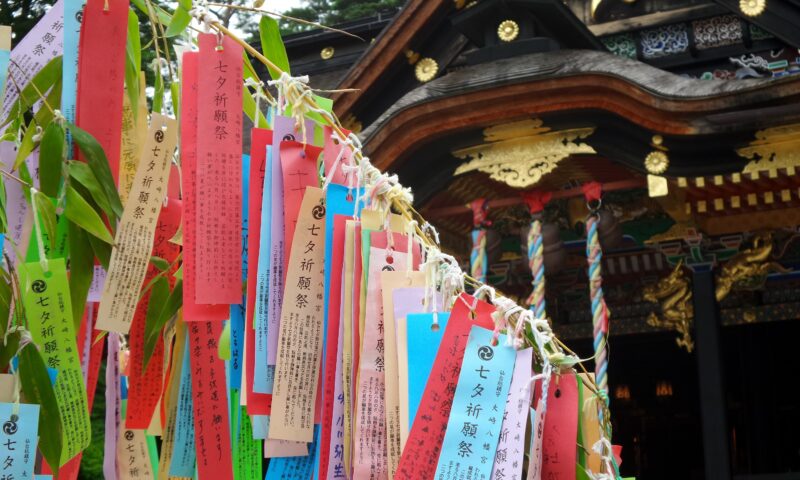
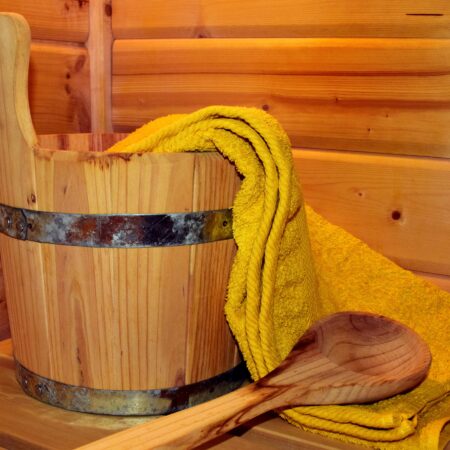
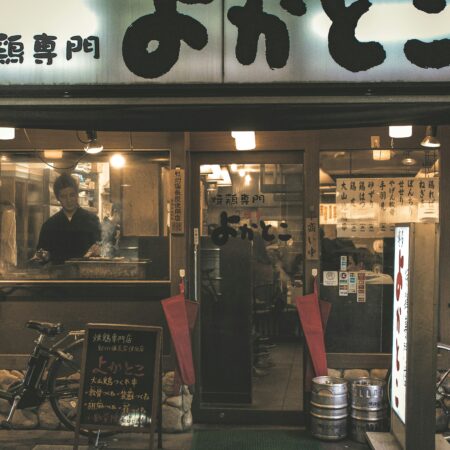
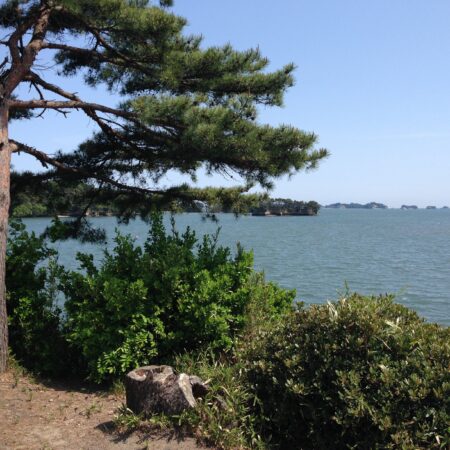
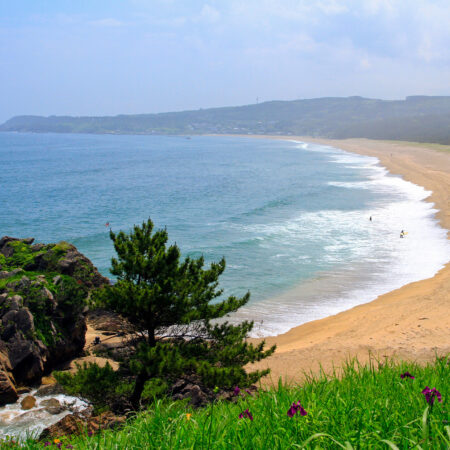
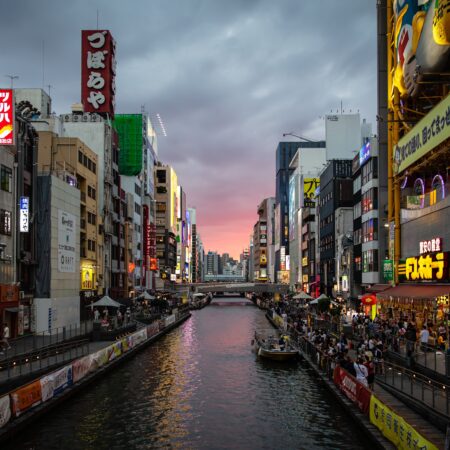
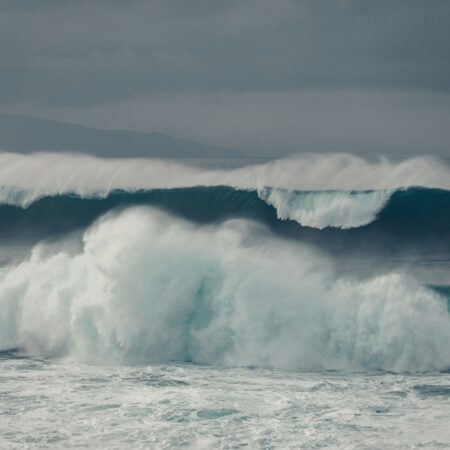

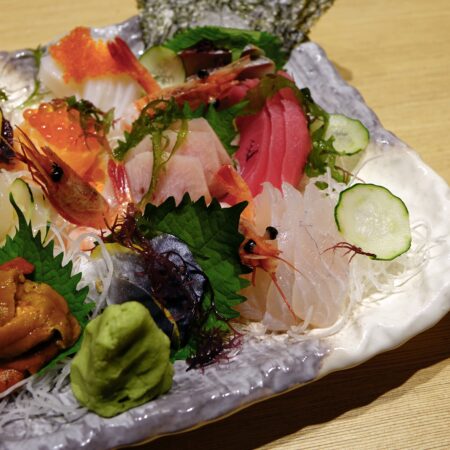
コメント